nut
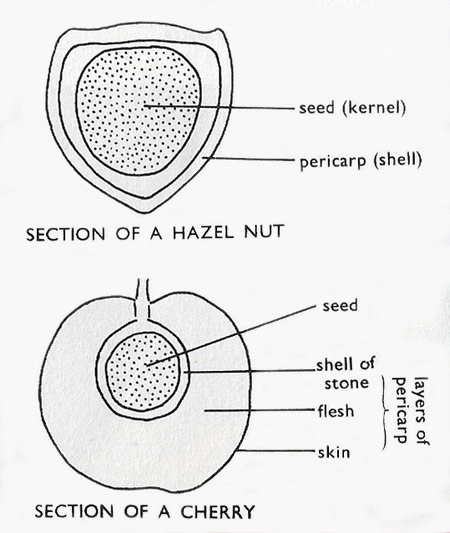
Both the hazel nut and the cherry are, botanically, fruits. In the hazel nut the shell is the pericarp and the kernel the seed. In the cherry the seed is inside the stone, and the pericarp is made up of three layers: the shell of the stone (endocarp), the flesh (mesocarp), and the skin (epicarp).
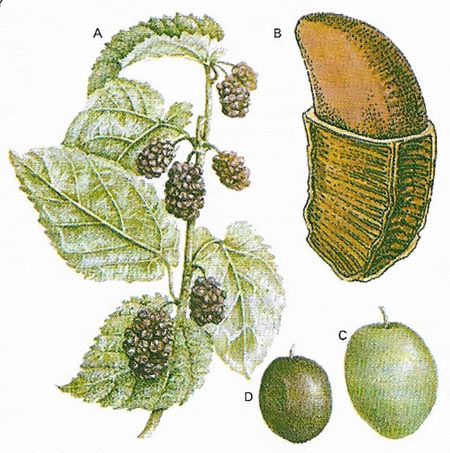
Black mulberries (Morus nigra) (A) grow in short, squat trees cultivated in Eurasia and North America for their fruits. Brazil nuts (Bertholletia excels) (B) grow on al large Amazonian tree. Olives (Olea europaea) are picked green (C) before they ripen or as black olives (D) after they ripen.
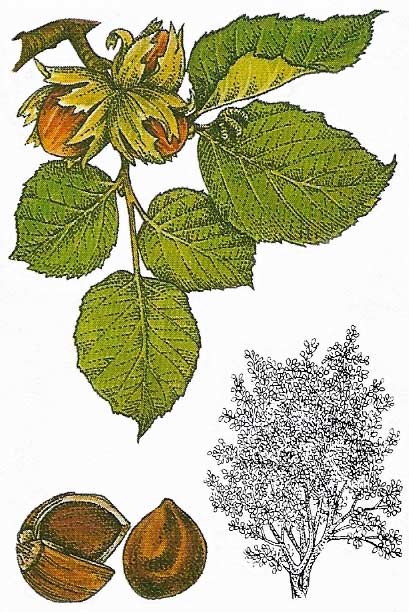
Ripe, fresh hazel nuts are partially covered with leafy husks. These nuts grow wild but cobnuts and filberts are two common varieties cultivated in England.
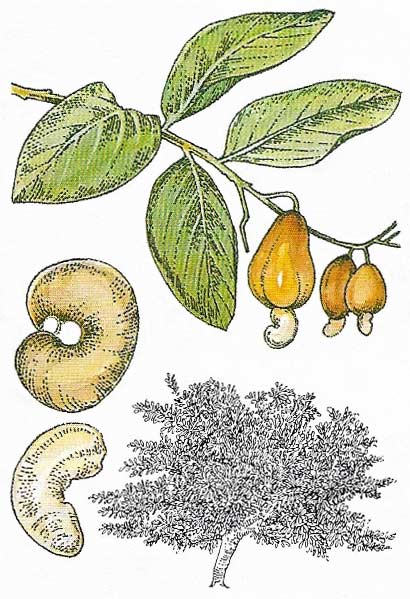
Cashew nuts are grown in the tropics. Each bean-shaped nut is formed beneath an apple-like fruit and has an inner and an outer shell which are removed before the nut is roasted.
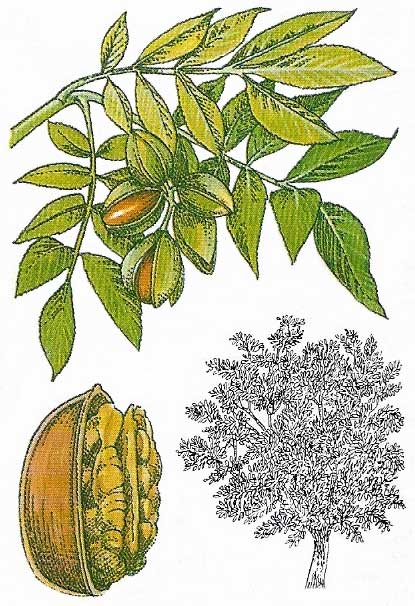
Mottled brown shells of the pecan burst apart to release the ripe nut. The pecan, a relative of the walnut, grows on large trees which are found in the temperate parts of North America. Pecans make excellent dessert nuts and are also salted.
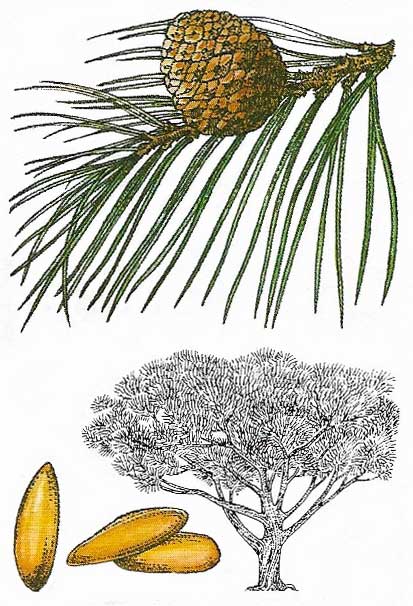
Raw or roasted, seeds of the stone pine may be eaten or used for cooking. The pine cones open in the heat of the sun to reveal a waxy kernel. Many species grow in the Mediterranean area.
A nut is a dry, indehiscent fruit with one seed, similar to an achene, but having a hard outer shell or pericarp. It develops from a flower that has petals attached above the ovary (inferior ovary). Nuts are produced by, for example, hazel (hazelnuts), oak (acorns), and chestnut.
In taste and texture, what we commonly call fruit and nuts are very different but botanically they are the same thing – both are actually fruits. The difference lies in the part that is eaten and the part that is thrown away. When you take a peach or a plum, for example, you eat the outer part of the fruit and throw away the stone which contains the seed. When you take a hazel nut, on the other hand, you eat the seed and throw away the outer part of shell.
From the plants point of view, there are different uses for these two types of fruit. The sweet pulp of plums and berries, for example, tempt animals to eat them and in so doing to carry the seed away and disperse it. The kernel of a nut, in contrast, is the store of food laid down in the seed to enable the embryo plant to develop and grow until such time as it can make its own food. The stored food is highly concentrated, rich in protein and fat, and this is why nuts are so nourishing and sustaining.
Some well-known edible nuts
walnut
 |
Walnuts are easy to crack open and delicious to eat. The walnut tree is a native but grows well in the temperate European climate. The nuts are first borne when the tree is about ten years old. Walnuts are beautiful trees and their timber is very valuable.
hazel nut
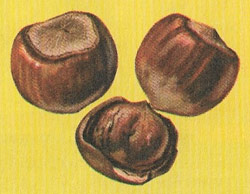 |
Hazel nuts, or cob nuts, are excellent to eat. Hazel is a low, shrubby tree and is not very often allowed to grow up naturally. Usually it is coppiced; that is, it is cut down so that many woody stems grow up from ground level.
almond
 |
Almonds are served as dessert, sometimes in their shells, which are soft when they are fresh. They are also used commercially in making oil for soap and cosmetics, and in confectionery. Almond trees will not bear fruit in cold climates, and are cultivated in southern Europe and the warmer regions of the United States.
sweet chestnut
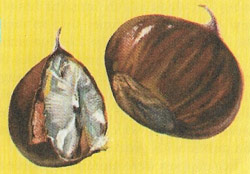 |
Sometimes sweet chestnut trees are grown for their timber, which is used, for example, for fencing. The familiar chestnuts that are roasted in winter come from, among other places, Spain and Italy. In colder climates the summers are not usually hot enough to ripen the fruit completely.
peanut
 |
Peanuts, or ground nuts, are the fruit of a herbaceous plant of the pea and bean family (Leguminosae). The fruit is unusual in that it develops and ripens underground. The plant grows mainly in tropical countries. Roasted and salted peanuts are delicious to eat, and the oil extracted from them is an important commercial product.


